“We’re going to take a horse-drawn carriage across the ocean.” I stared at Laura in disbelief. She repeated herself. I had to admit that I was baffled at what kind of experience she had planned until she pulled out her phone and showed me a picture. The photo showed bright yellow wagons being pulled by a pair of horses across an ocean tidal flat in the Wadden Sea on Germany’s northern coast. I knew this would be an adventure.
The Wadden Sea is a massive tidal basin that stretches from the Netherlands in the west, across most of northern Germany and then up the peninsula to Denmark — a distance of over 300 miles. It essentially occupies the southern end of the North Sea.
In each country, it has been named the Wadden Sea National Park and is recognized as a UNESCO World Heritage Site for its natural value. Millions of migratory birds use the tidal flats on their travels, and the water is home to seals and many other animals. It is also incredibly beautiful.

The closer we got to our trip to Germany, the more we looked forward to the horse-drawn carriage ride across the ocean. As bizarre as it sounds, focusing on that single activity infused a passion to our trip.
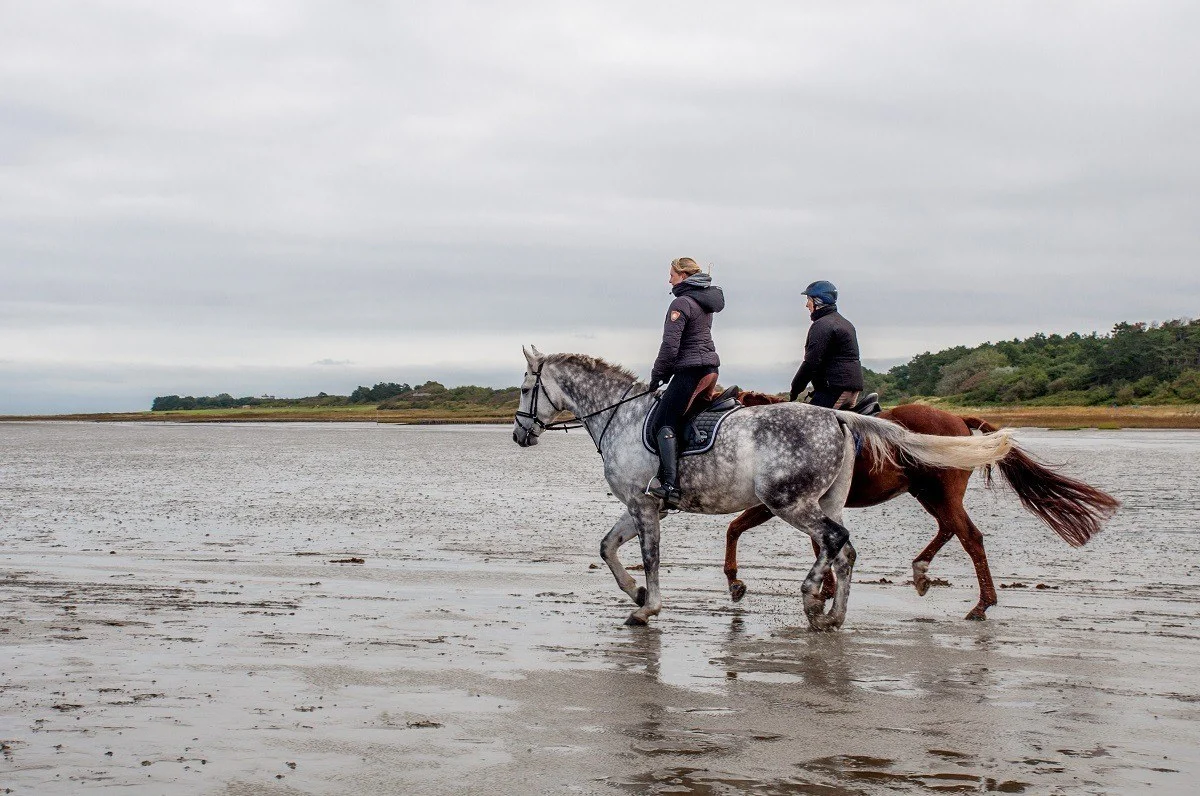
Unfortunately, all of the build up and interest was for naught. We didn’t get to take the horse-drawn wagon across the sea at low tide. There was no journey across the salt flats of the Wadden Sea National Park to Neuwerk Island.
On the day of our visit, the weather just didn’t cooperate and strong winds pelted Germany’s northern coast. We could get to the island, but, due to the tides and the winds, we couldn’t return. Put simply, had we visited Neuwerk Island, we would have been stranded.
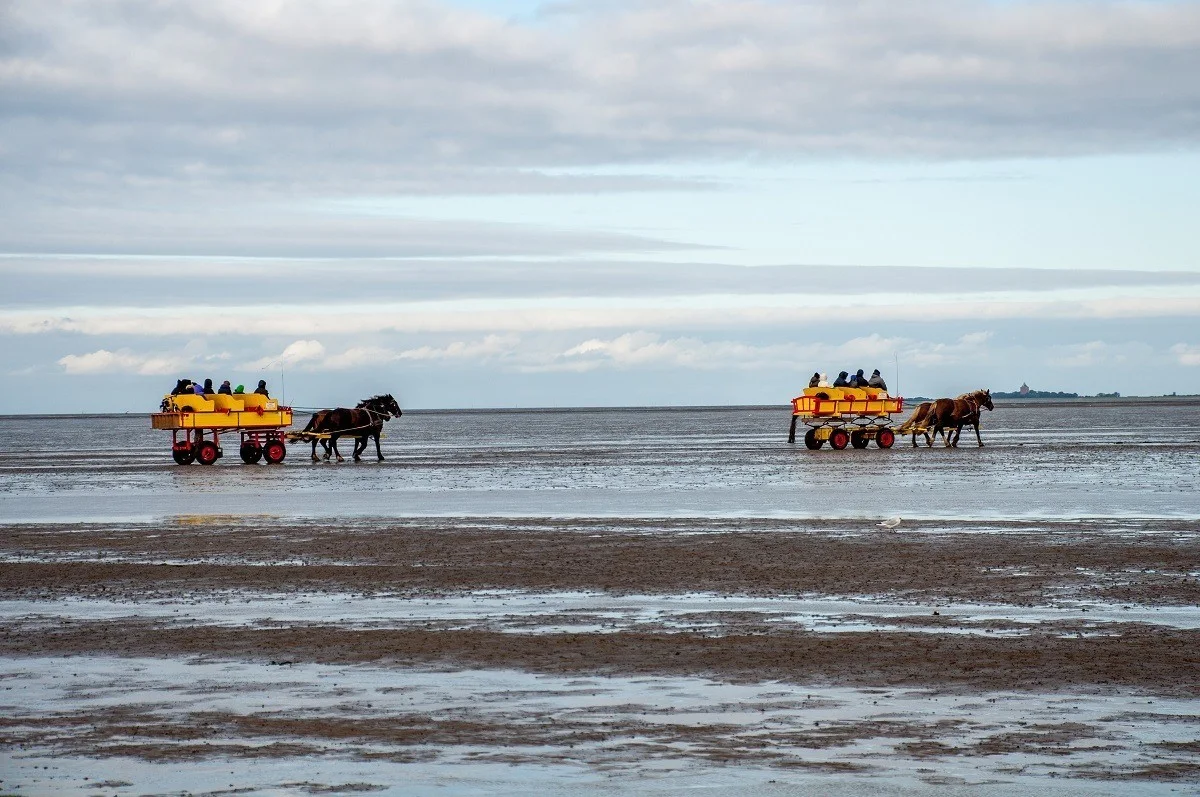
So, at the beach on the mainland, we watched as a few hearty travelers boarded the carriage wagons and headed out across the salt flats. These intrepid souls would be on the island for a few days and didn’t seem to mind in the slightest. I felt some pangs of jealousy. The one thing I was most skeptical about on this trip to Germany was the one thing I really wanted to do now that we were standing there.
Turning our back to the sea, we headed into the visitor’s center. This three-story wood and glass modernist building houses an extremely informative exhibit on the ecology of the area. To be honest, we’re not really museum people. However, this exhibit is first-rate, and we understood it completely even without being able to read German.
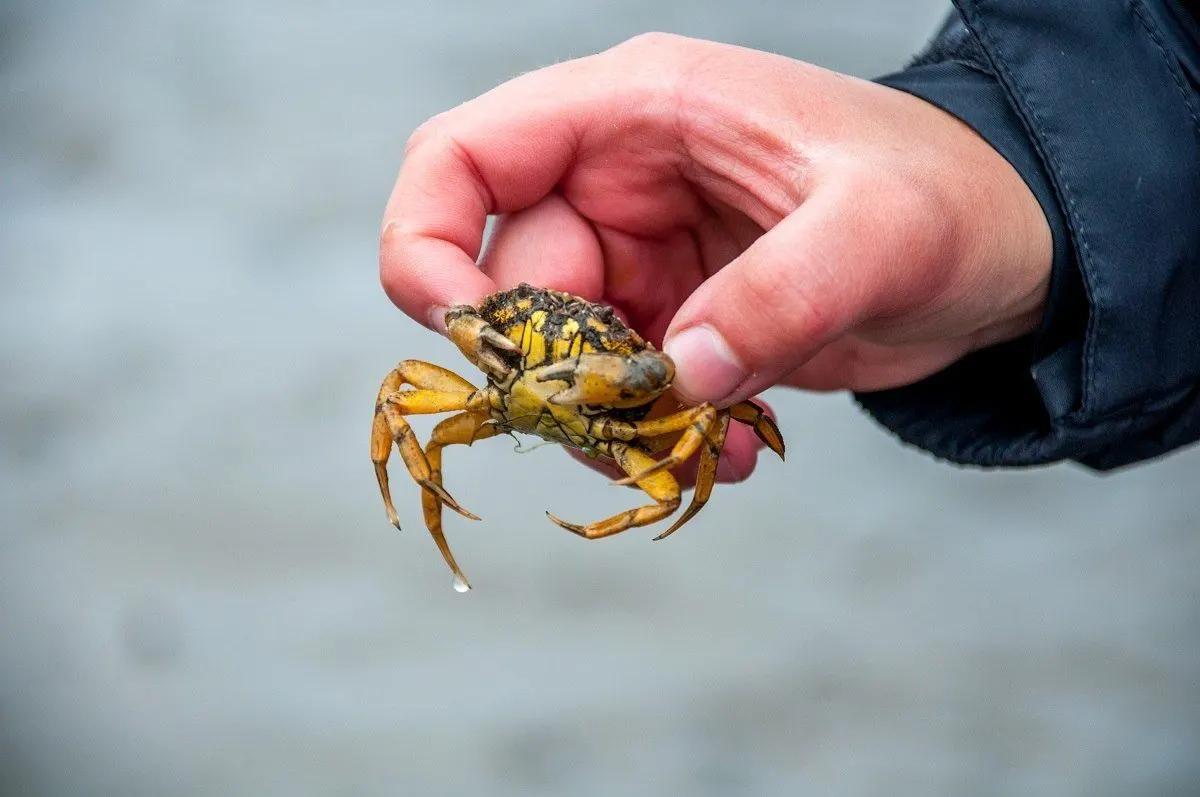
Stepping out from the visitor’s center into the strong wind, we were met by our guide Ronja, a naturalist with the national park, and joined a German family on their walk out onto the salt flats. We trudged through the sand dunes before sinking into the muddy flats. (Note: a good pair of mud boots is an absolute necessity.)
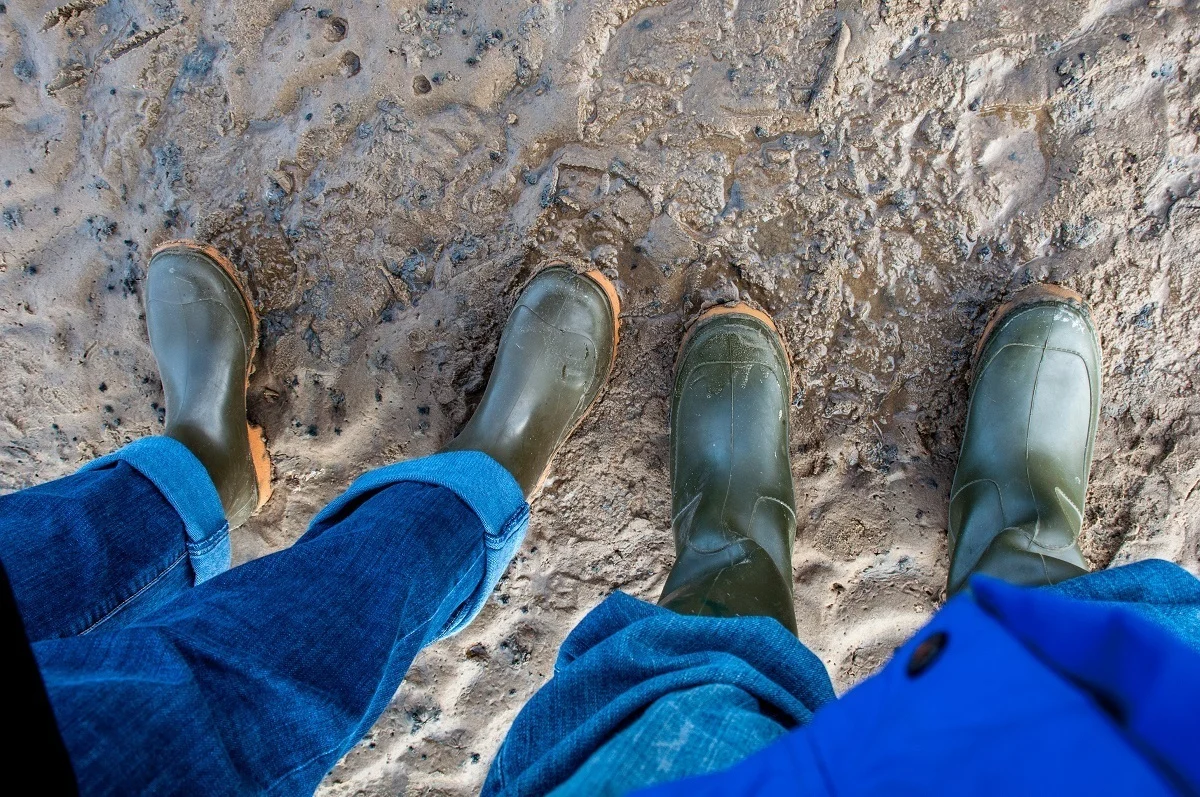
Our eyes were immediately drawn to the patterns in the mud from the wind and waves. Soon, we were drawn to strange little mounds in the mud. The answer to these curious little formations came soon enough. Worms. Lots of them.
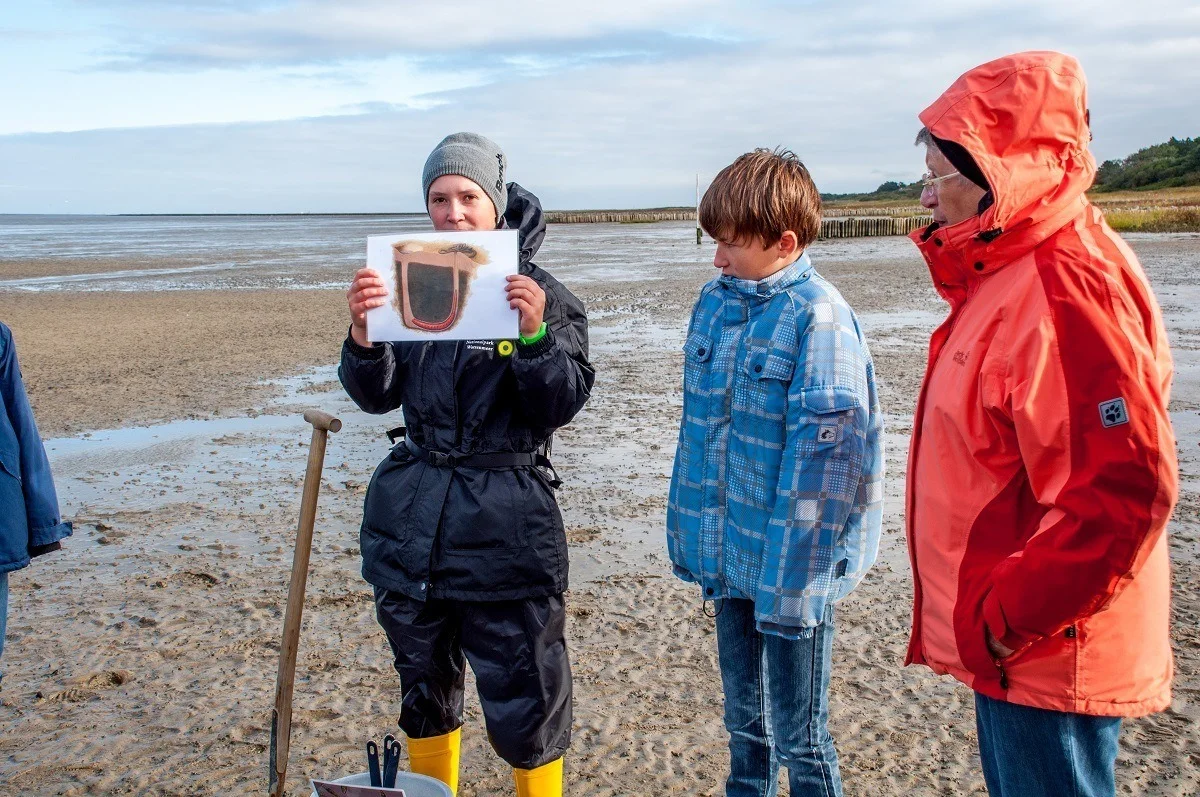
As Ronja showed us, the salt flats is full of life. From migratory birds and seals to worms, crabs, and microscopic organisms. It soon became apparent why Ronja had brought a pitchfork, small shovel, and lots of buckets. We’d be digging in the mud for creatures. It was a most unexpected (and fun) turn of events. And we found lots of creatures — crabs, mussels, worms, and other things that we’d never seen before. Ronja dutifully put each of them into plastic tubes in one of her buckets.
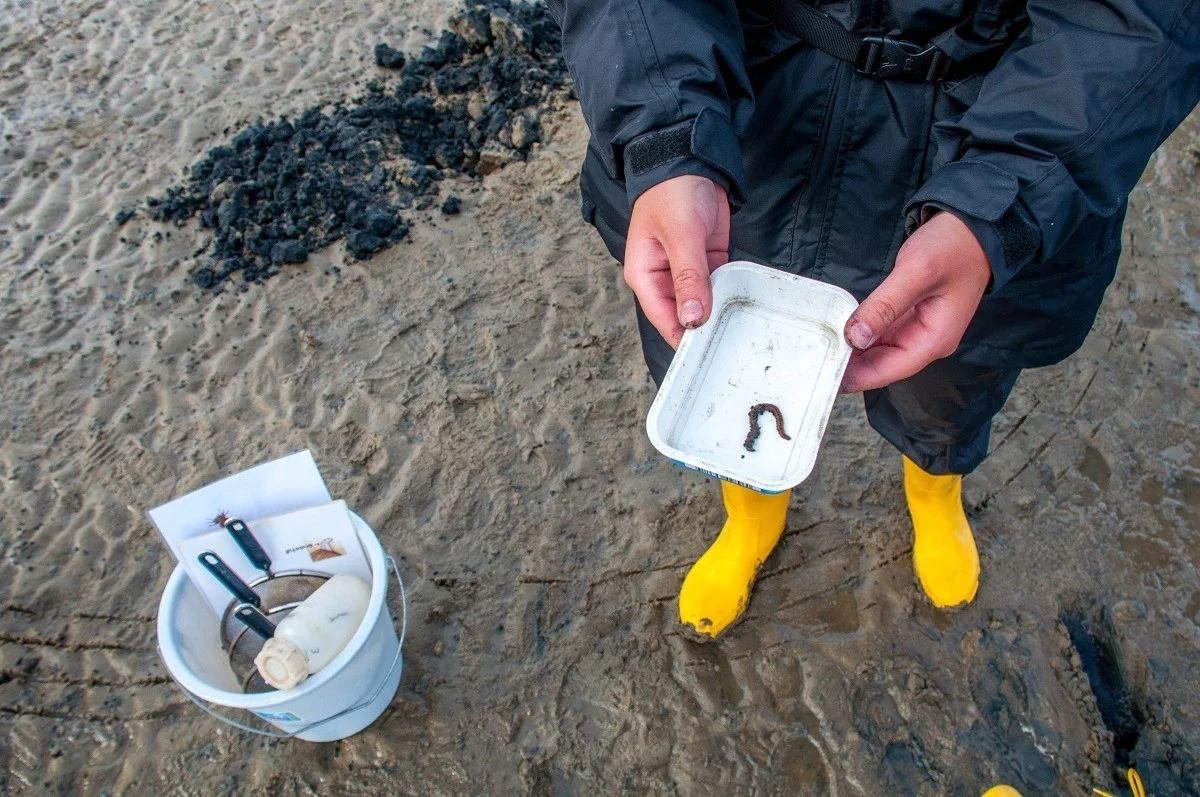
After digging in the mud for nearly two hours, Ronja took us back to the visitor’s center for the “big show.” She put some of the creatures we discovered under a high-powered microscope that projected up on a large HD TV. The worms and other bugs looked positively frightening when magnified on the large screens.
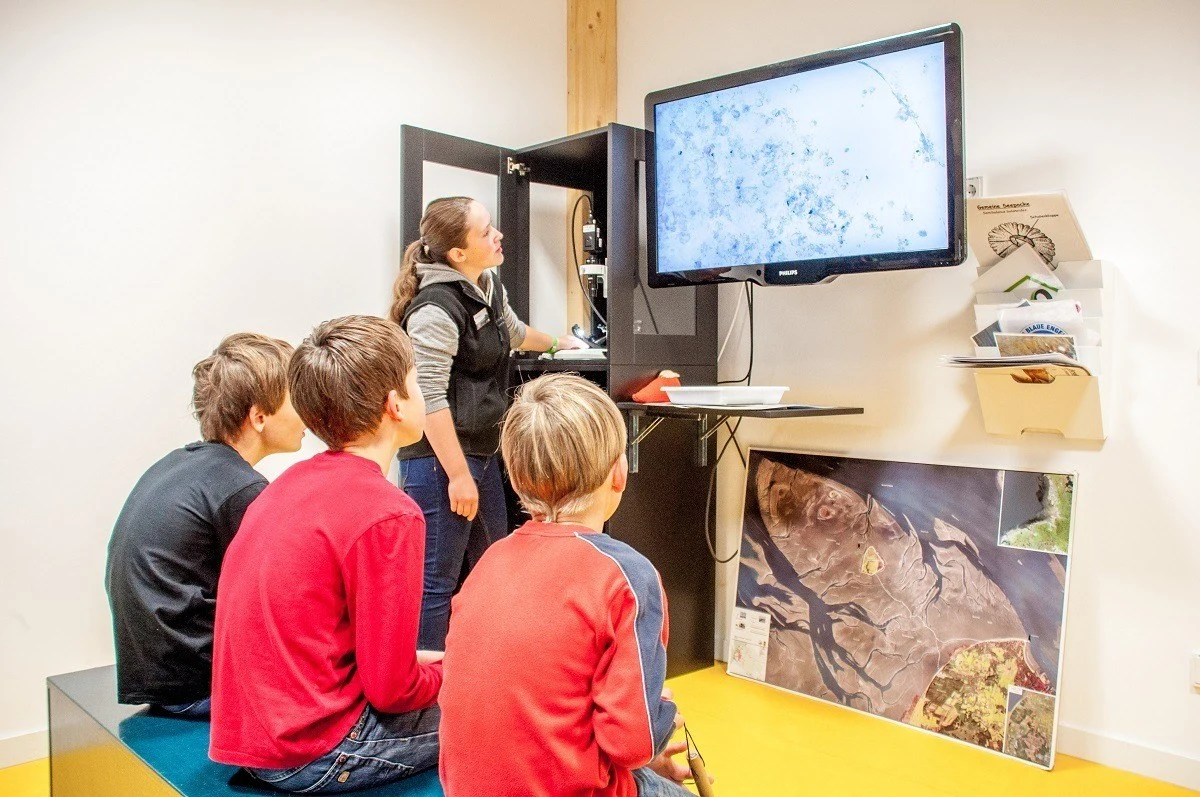
Since our afternoon was supposed to be spent heading out to Neuwerk Island and then a ferry back to Cuxhaven, we had some extra time. At the last minute, one of the employees at the national park visitor’s center suggested a shipwreck museum back in Cuxhaven. (Did we mention that we’re not museum people?) The museum didn’t sound the slightest bit interesting.
But when travel throws you a curveball, you adapt. We decided to give the shipwreck museum a try. And good thing we did!
The Wind Force 10 Wreck and Fishing Museum Cuxhaven (Windstärke 10 in German) turned out to be a very interesting experience. The museum is the combination of two former museums — one focusing on shipwrecks and one focusing on the city’s fishing industry.
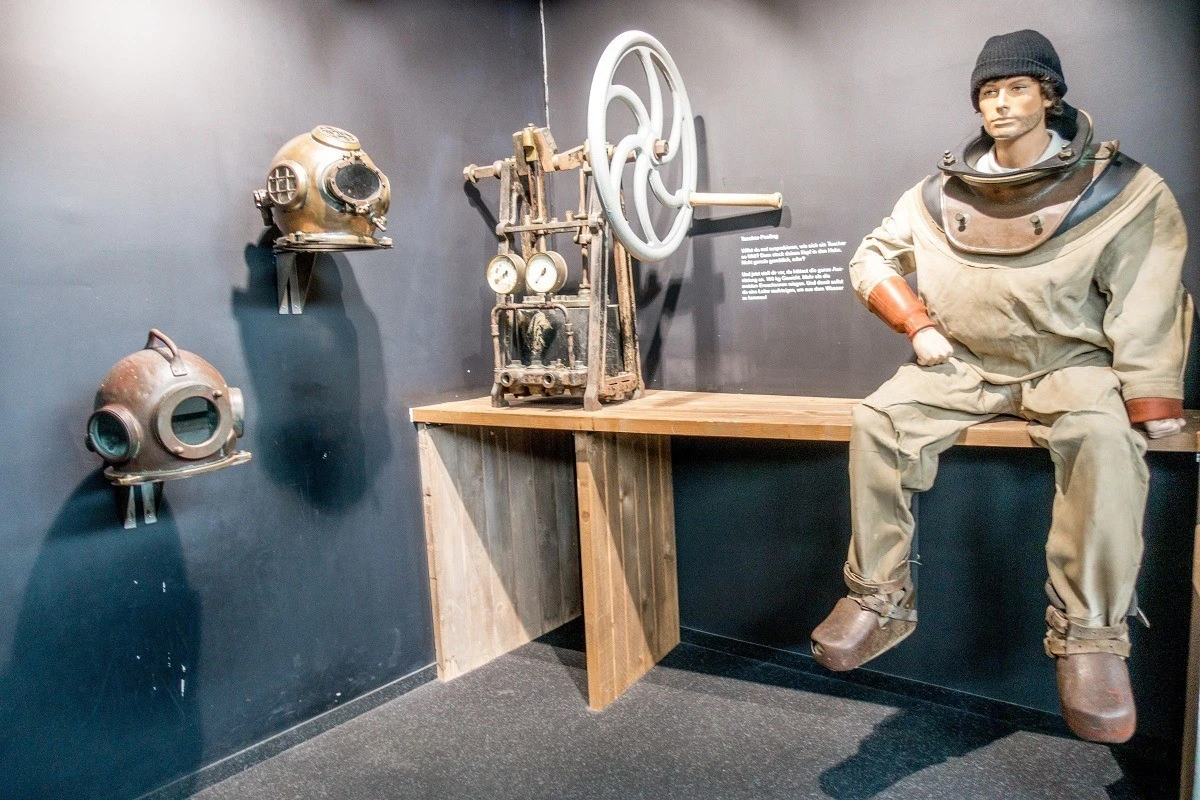
The museum turned out to be a fascinating extension of our experience walking on the muddy Wadden Sea tidal flats. Where the Wadden Sea Visitor Center focused on the ecology of the sea and its natural importance, the Wind Force 10 museum explored the importance of the sea to the people of this area — both the good and the bad.
Topics like shipwrecks and over-fishing are addressed head-on, along with information about how the region is working to protect this sensitive ecosystem. Wind Force 10 turned out to the perfect complement to our earlier experience.
While we didn’t get to take the horse-drawn wagons to Neuwerk Island, we had a remarkable and informative experience all the same. We enjoyed exploring the national park and seeing how this UNESCO World Heritage Site fits into the importance of Northern Germany.
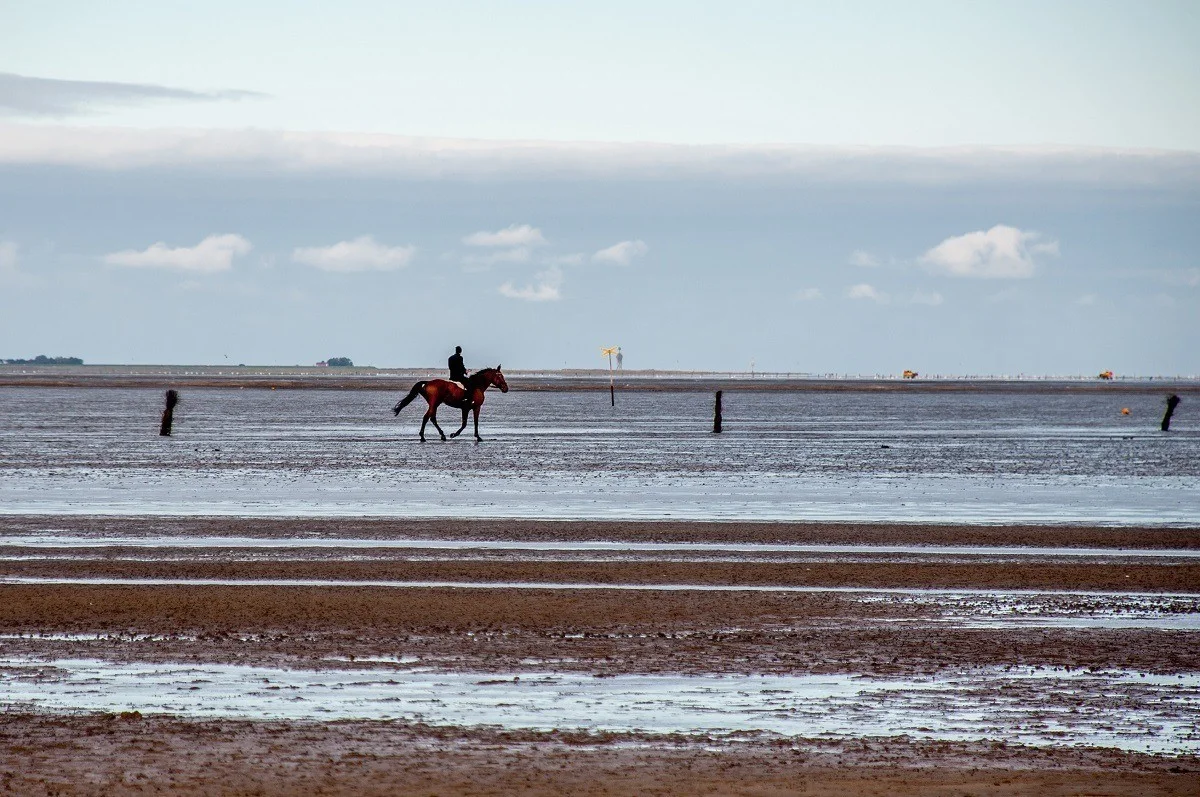
Visitor Information for Wadden Sea National Park
About the Wadden Sea Visitor Centers
There are several visitor’s centers along the coastline in all three countries. We visited the Wadden Sea Visitor Center Cuxhaven (in German it is Nationalpark Wattenmeer Besucherzentrum).
Visitor Center Hours of Operation
In the summer (April 1-October 31), the visitor center is open every day. Monday-Friday from 10:00-18:00 and on Saturday, Sunday, and holidays from 12:00-18:00.
In the winter (November 1-March 31), the visitor’s center is open Monday-Friday from 10:00-16:00, and on Sunday and holidays from 12:00-16:00. It is closed on Saturdays.
The visitor’s center is closed on Good Friday, Christmas Eve, Christmas Day and New Year’s Day every year.
Visitor Center Admission
That’s the best part: free.
Website
Getting to the Visitor Center
By bus from the Cuxhaven train station, take bus 1002. You’ll enjoy a brief 20 minute ride through Cuxhaven and the surroundings before arriving the Sahlenburger Strand (beach). Exit at the Cuxhaven Abzweig Seehospital. The stop is across the street from the large, high-rise building (the trees of the Nationalpark Wattenmeer will be on your right).
If coming by private car, use the parking lot on Hans-Retzlaff Street, which is located behind the high-rise building. The Wadden Sea Visitor Centre Cuxhaven is located at: Nordheimstr. 200, 27476 Cuxhaven-Sahlenburg.
Cuxhaven and the national park make a good day trip from Hamburg and are less than two hours from the city.
Tips for Visitors
The visitor center offers audio guides in both German and English (cost is €3). All top-level text/major topics are in both German and English, but the details are only available in German.
Guided tours can be arranged in English for groups only. Otherwise, all tours are in German only. As we discovered with our guide, she spoke English and was able to include us in her German tour. Finally, to explore the salt flats, it is a good idea who have mud boots.
Dog Policy
Dogs are not allowed as they disrupt the migratory birds.
Wind Force 10 – Wreck and Fishing Museum Cuxhaven
Wind Force 10 Museum Hours
In the summer (April-October), the museum is open daily 10:00-18:00. In the winter (November-March), the museum is open daily (except Mondays) from 10:00-17:00.
The visitor center is closed December 24-26 for Christmas, December 31 and New Year’s Day every year.
Wind Force 10 Admission
Free.
Wind Force 10 Museum Location
The Wind Force 10 Museum is located right in the harbor of Cuxhaven: Ohlroggestraße 1, 27472 Cuxhaven.
Website
Getting to the Wind Force 10 Museum
It’s a 5-7 minute walk from the center of town. The museum is located almost immediately behind the train station and the Real grocery store complex.
We visited the Wadden Sea National Park and Cuxhaven thanks to the German National Tourist Board. All opinions of the unexpected and natural are our own.
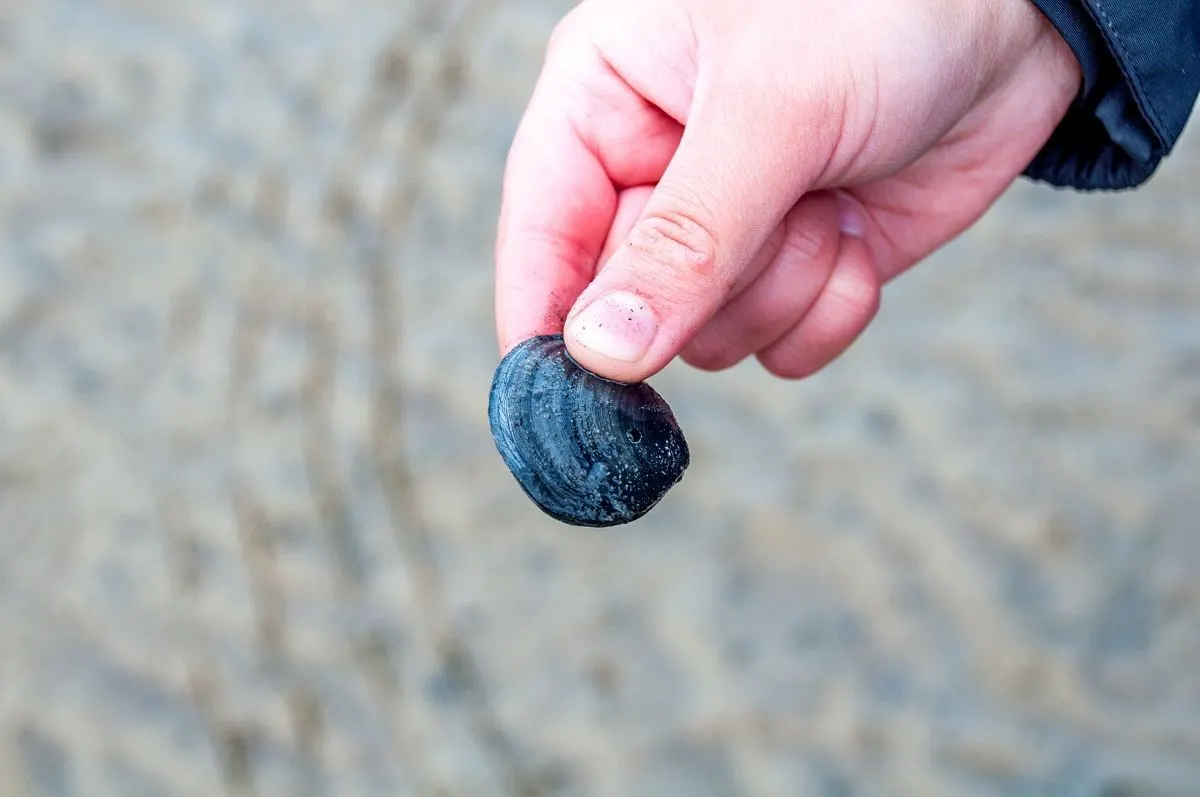
Lance Longwell is a travel writer and photographer who has published Travel Addicts since 2008, making it one of the oldest travel blogs. He is a life-long traveler, having visited all 50 of the United States by the time he graduated high school. Lance has continued his adventures by visiting 70 countries on 5 continents – all in search of the world’s perfect sausage. He’s a passionate foodie and enjoys hot springs and cultural oddities. When he’s not traveling (or writing about travel), you’ll find him photographing his hometown of Philadelphia.

Silke
Friday 17th of March 2017
Been there, done that. Hi it's Silke from used to be Bremervoerde near Bremen. I now live in Cincinnati, Ohio. Isn't it amazing? I used to live in Cuxhaven- Duhnen and every day, those carriages would go by the Hotel I worked for, with people vacationing in town. Really fun to do. Yes, interesting that you have go when there is "Ebbe" time and you only have a few hours to make it back in time before the water "Flut" would come back in. Best to dress in layers even in the summer time. Don't forget the sunscreen! You never know, when you are near and in the water. Recommend to do, kids love it! Can't remember the price, I did it about 10 years ago but something like $ $50.00 per person. Not cheap but this is seasonal for the owners.